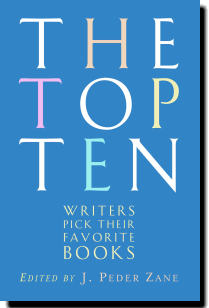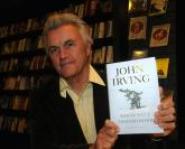This list reflects the rankings of all 174 lists published as of October 1, 2022. The Top Ten books are the same as those in the published book (see below), though several have changed positions. Lolita has overtaken Gatsby for the top slot; Marquez and Woolf are up at the expense of Joyce and Faulkner, who remain the only writers with two books in this Top Ten List.
 1. Lolita by Vladimir Nabokov (1955). “Lolita, light of my life, fire of my loins. My sin, my soul.” So begins the Russian master’s infamous novel about Humbert Humbert, a middle-aged man who falls madly, obsessively in love with a twelve-year-old “nymphet,” Dolores Haze. So he marries the girl’s mother. When she dies he becomes Lolita’s father. As Humbert describes their car trip — a twisted mockery of the American road novel — Nabokov depicts love, power, and obsession in audacious, shockingly funny language.
1. Lolita by Vladimir Nabokov (1955). “Lolita, light of my life, fire of my loins. My sin, my soul.” So begins the Russian master’s infamous novel about Humbert Humbert, a middle-aged man who falls madly, obsessively in love with a twelve-year-old “nymphet,” Dolores Haze. So he marries the girl’s mother. When she dies he becomes Lolita’s father. As Humbert describes their car trip — a twisted mockery of the American road novel — Nabokov depicts love, power, and obsession in audacious, shockingly funny language.
 2. The Great Gatsby by F. Scott Fitzgerald (1925). Perhaps the most searching fable of the American Dream ever written, this glittering novel of the Jazz Age paints an unforgettable portrait of its day — the flappers, the bootleg gin, the careless, giddy wealth. Self-made millionaire Jay Gatsby, determined to win back the heart of the girl he loved and lost, emerges as an emblem for romantic yearning, and the novel’s narrator, Nick Carroway, brilliantly illuminates the post–World War I end to American innocence.
2. The Great Gatsby by F. Scott Fitzgerald (1925). Perhaps the most searching fable of the American Dream ever written, this glittering novel of the Jazz Age paints an unforgettable portrait of its day — the flappers, the bootleg gin, the careless, giddy wealth. Self-made millionaire Jay Gatsby, determined to win back the heart of the girl he loved and lost, emerges as an emblem for romantic yearning, and the novel’s narrator, Nick Carroway, brilliantly illuminates the post–World War I end to American innocence.
 3. In Search of Lost Time by Marcel Proust (1913–27). It’s about time. No, really. This seven-volume, three-thousand-page work is only superficially a mordant critique of French (mostly high) society in the belle époque. Both as author and as “Marcel,” the first-person narrator whose childhood memories are evoked by a crumbling madeleine cookie, Proust asks some of the same questions Einstein did about our notions of time and memory. As we follow the affairs, the badinage, and the betrayals of dozens of characters over the years, time is the highway and memory the driver.
3. In Search of Lost Time by Marcel Proust (1913–27). It’s about time. No, really. This seven-volume, three-thousand-page work is only superficially a mordant critique of French (mostly high) society in the belle époque. Both as author and as “Marcel,” the first-person narrator whose childhood memories are evoked by a crumbling madeleine cookie, Proust asks some of the same questions Einstein did about our notions of time and memory. As we follow the affairs, the badinage, and the betrayals of dozens of characters over the years, time is the highway and memory the driver.
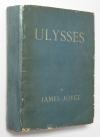 4. Ulysses by James Joyce (1922). Filled with convoluted plotting, scrambled syntax, puns, neologisms, and arcane mythological allusions, Ulysses recounts the misadventures of schlubby Dublin advertising salesman Leopold Bloom on a single day, June 16, 1904. As Everyman Bloom and a host of other characters act out, on a banal and quotidian scale, the major episodes of Homer’s Odyssey — including encounters with modern-day sirens and a Cyclops — Joyce’s bawdy mock-epic suggests the improbability, perhaps even the pointlessness, of heroism in the modern age.
4. Ulysses by James Joyce (1922). Filled with convoluted plotting, scrambled syntax, puns, neologisms, and arcane mythological allusions, Ulysses recounts the misadventures of schlubby Dublin advertising salesman Leopold Bloom on a single day, June 16, 1904. As Everyman Bloom and a host of other characters act out, on a banal and quotidian scale, the major episodes of Homer’s Odyssey — including encounters with modern-day sirens and a Cyclops — Joyce’s bawdy mock-epic suggests the improbability, perhaps even the pointlessness, of heroism in the modern age.
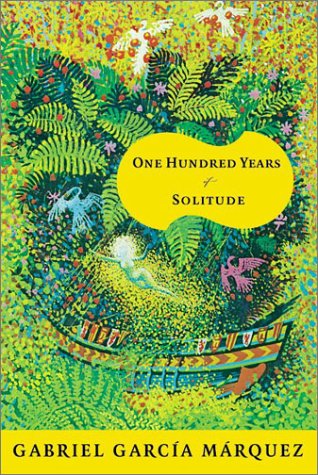 5. One Hundred Years of Solitude by Gabriel García Márquez (1967). Widely considered the most popular work in Spanish since Don Quixote, this novel — part fantasy, part social history of Colombia — sparked fiction’s “Latin boom” and the popularization of magic realism. Over a century that seems to move backward and forward simultaneously, the forgotten and offhandedly magical village of Macondo — home to a Faulknerian plethora of incest, floods, massacres, civil wars, dreamers, prudes, and prostitutes — loses its Edenic innocence as it is increasingly exposed to civilization.
5. One Hundred Years of Solitude by Gabriel García Márquez (1967). Widely considered the most popular work in Spanish since Don Quixote, this novel — part fantasy, part social history of Colombia — sparked fiction’s “Latin boom” and the popularization of magic realism. Over a century that seems to move backward and forward simultaneously, the forgotten and offhandedly magical village of Macondo — home to a Faulknerian plethora of incest, floods, massacres, civil wars, dreamers, prudes, and prostitutes — loses its Edenic innocence as it is increasingly exposed to civilization.
 6. To the Lighthouse by Virginia Woolf (1927). The Ramsays and their eight children vacation with an assortment of scholarly and artistic houseguests by the Scottish seaside. Mainly set on two days ten years apart, the novel describes the loss, love, and disagreements of family life while reaching toward the bigger question — “What is the meaning of life?” — that Woolf addresses in meticulously crafted, modernist prose that is impressionistic without being vague or sterile.
6. To the Lighthouse by Virginia Woolf (1927). The Ramsays and their eight children vacation with an assortment of scholarly and artistic houseguests by the Scottish seaside. Mainly set on two days ten years apart, the novel describes the loss, love, and disagreements of family life while reaching toward the bigger question — “What is the meaning of life?” — that Woolf addresses in meticulously crafted, modernist prose that is impressionistic without being vague or sterile.
 7. Stories of Flannery O’Connor (1925–64). Full of violence, mordant comedy, and a fierce Catholic vision that is bent on human salvation at any cost, Flannery O’Connor’s stories are like no others. Bigots, intellectual snobs, shyster preachers, and crazed religious seers — a full cavalcade of what critics came to call “grotesques” — careen through her tales, and O’Connor gleefully displays the moral inadequacy of all of them. Twentieth-century short stories often focus on tiny moments, but O’Connor’s stories, with their unswerving eye for vanity and their profound sense of the sacred, feel immense.
7. Stories of Flannery O’Connor (1925–64). Full of violence, mordant comedy, and a fierce Catholic vision that is bent on human salvation at any cost, Flannery O’Connor’s stories are like no others. Bigots, intellectual snobs, shyster preachers, and crazed religious seers — a full cavalcade of what critics came to call “grotesques” — careen through her tales, and O’Connor gleefully displays the moral inadequacy of all of them. Twentieth-century short stories often focus on tiny moments, but O’Connor’s stories, with their unswerving eye for vanity and their profound sense of the sacred, feel immense.
 8. Dubliners by James Joyce (1916). Although many of these largely autobiographical stories evoke themes of death, illness, and stasis, nearly all offer their characters redemption — or at least momentary self-knowledge — through what Joyce called “epiphanies,” in which defeat or disappointment is transformed by a sudden, usually life-altering flash of awareness. The collection’s emotional centerpiece is its concluding tale, “The Dead,” which moves from a New Year’s Eve party where guests muse about issues of the day — the Catholic church, Irish nationalism, Freddie Malins’s worrying drunkenness — to a man’s discovery of his wife weeping over a boy who died for love of her. A profound portrait of identity and loneliness, it is Joyce’s most compassionate work.
8. Dubliners by James Joyce (1916). Although many of these largely autobiographical stories evoke themes of death, illness, and stasis, nearly all offer their characters redemption — or at least momentary self-knowledge — through what Joyce called “epiphanies,” in which defeat or disappointment is transformed by a sudden, usually life-altering flash of awareness. The collection’s emotional centerpiece is its concluding tale, “The Dead,” which moves from a New Year’s Eve party where guests muse about issues of the day — the Catholic church, Irish nationalism, Freddie Malins’s worrying drunkenness — to a man’s discovery of his wife weeping over a boy who died for love of her. A profound portrait of identity and loneliness, it is Joyce’s most compassionate work.
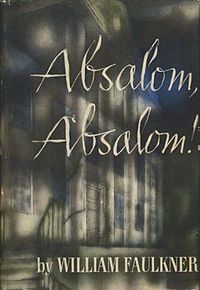 9. Absalom, Absalom! by William Faulkner (1936). Weaving mythic tales of biblical urgency with the experimental techniques of high modernism, Faulkner bridged the past and future. This is the story of Thomas Sutpen, a rough-hewn striver who came to Mississippi in 1833 with a gang of wild slaves from Haiti to build a dynasty. Almost in reach, his dream is undone by plagues of biblical (and Faulknerian) proportions: racism, incest, war, fratricide, pride, and jealousy. Through the use of multiple narrators, Faulkner turns this gripping Yoknapatawpha saga into a profound and dazzling meditation on truth, memory, history, and literature itself.
9. Absalom, Absalom! by William Faulkner (1936). Weaving mythic tales of biblical urgency with the experimental techniques of high modernism, Faulkner bridged the past and future. This is the story of Thomas Sutpen, a rough-hewn striver who came to Mississippi in 1833 with a gang of wild slaves from Haiti to build a dynasty. Almost in reach, his dream is undone by plagues of biblical (and Faulknerian) proportions: racism, incest, war, fratricide, pride, and jealousy. Through the use of multiple narrators, Faulkner turns this gripping Yoknapatawpha saga into a profound and dazzling meditation on truth, memory, history, and literature itself.
 10. The Sound and the Fury by William Faulkner (1929). A modernist classic of Old South decay, this novel circles the travails of the Compson family from four different narrative perspectives. All are haunted by the figure of Caddy, the only daughter, whom Faulkner described as “a beautiful and tragic little girl.” Surrounding the trials of the family itself are the usual Faulkner suspects: alcoholism, suicide, racism, religion, money, and violence both seen and unseen. In the experimental style of the book, Quentin Compson summarizes the confused honor and tragedy that Faulkner relentlessly evokes: “theres a curse on us its not our fault is it our fault.”
10. The Sound and the Fury by William Faulkner (1929). A modernist classic of Old South decay, this novel circles the travails of the Compson family from four different narrative perspectives. All are haunted by the figure of Caddy, the only daughter, whom Faulkner described as “a beautiful and tragic little girl.” Surrounding the trials of the family itself are the usual Faulkner suspects: alcoholism, suicide, racism, religion, money, and violence both seen and unseen. In the experimental style of the book, Quentin Compson summarizes the confused honor and tragedy that Faulkner relentlessly evokes: “theres a curse on us its not our fault is it our fault.”
Top Ten Books of the 20th Century from the Published Book
1. Lolita by Vladimir Nabokov (1955)
2. The Great Gatsby by F. Scott Fitzgerald (1925)
3. In Search of Lost Time by Marcel Proust (1913–27)
4. Ulysses by James Joyce (1922)
5. Dubliners by James Joyce (1916)
6. One Hundred Years of Solitude by Gabriel García Márquez (1967)
7. The Sound and the Fury by William Faulkner (1929)
8. To the Lighthouse by Virginia Woolf (1927)
9. The Stories of Flannery O’Connor (1925–64)
10. Absalom, Absalom! by William Faulkner (1936)


